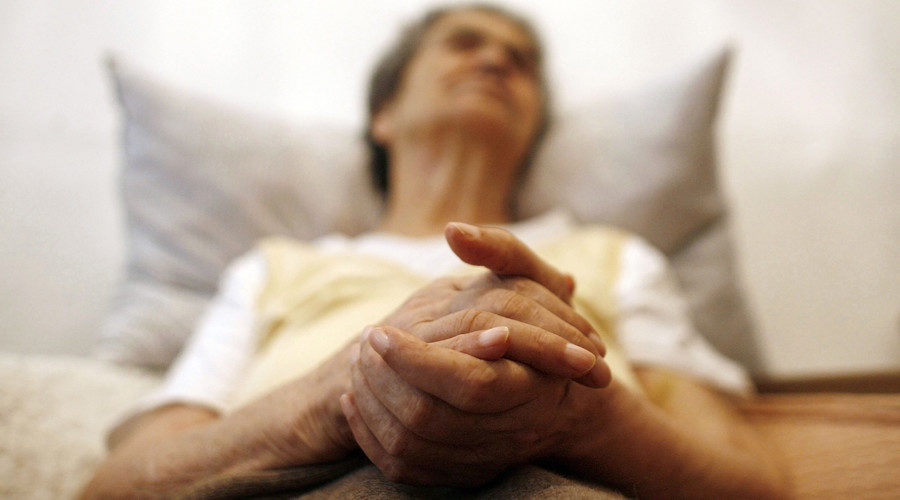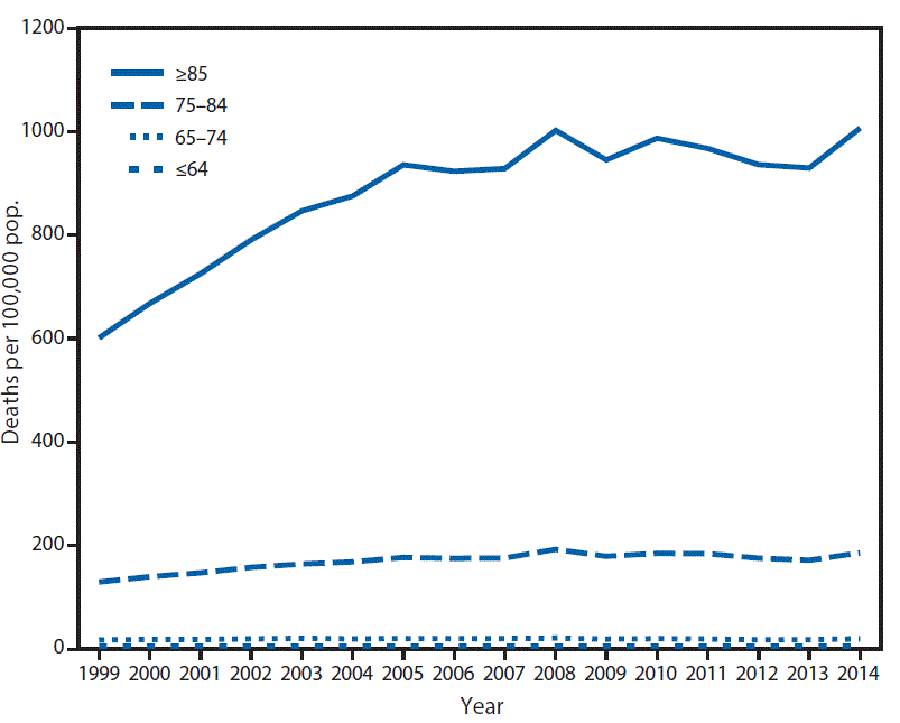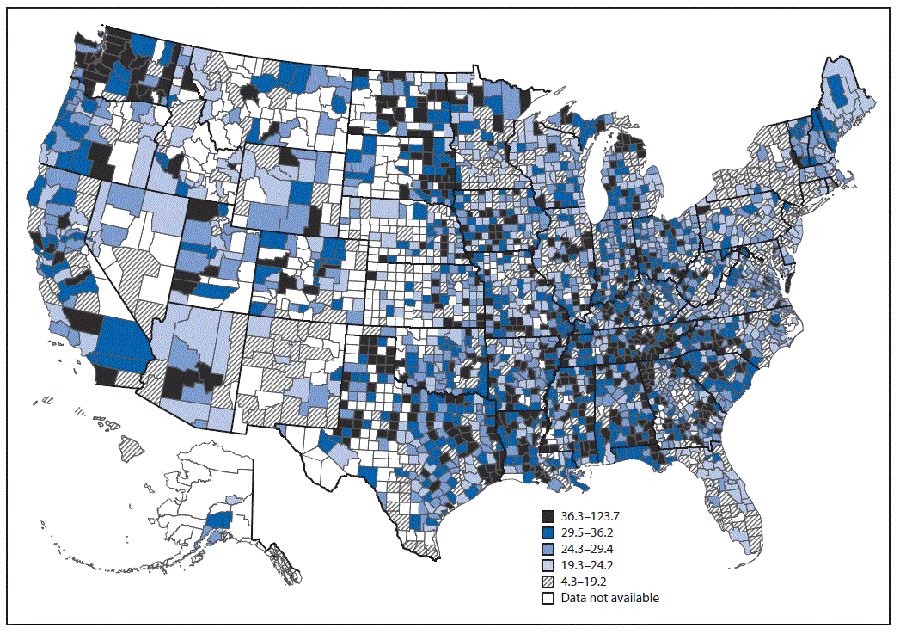On Thursday, the US Centers for Disease Control and Prevention (CDC) released a Morbidity and Mortality Weekly Report that showed the number of deaths caused by Alzheimer's rose by 54.5 percent from 1999 to 2014.
Using data from the National Vital Statistics System, the CDC reported that 93,541 people died in 2014 from Alzheimer's disease. Adjusting for a rising population of senior citizens, the death rate in 2014 was 25.4 deaths per 100,000 people, a 54.5 percent increase compared to the death rate in 1999.
Without adjusting for age and population, the rate would have increased by 83.8 percent.
While the adjusted rates increased for all age groups over 65, the rate for those over 85 years old increased by 67.4 percent.
Most of the deaths occurred in a nursing home or long-term care facility as those who have the disease usually require extensive care. However, the number of those who died in a medical facility declined from 14.7 percent in 1999 to 6.6 percent in 2014, while those who died at home increased from 13.9 in 1999 to 24.9 in 2014.
"For every person with Alzheimer's there are three people providing care for them," Keith Fargo, director of scientific programs and outreach at the Alzheimer's Association said, according to WebMD. "We know that caregivers for Alzheimer's are more likely to have depression, anxiety and they spend more on their own health care each year because of the physical toll that it takes."
In the report, the CDC suggests caregivers could benefit from support, such as education, respite care and case management services to lessen the potential burden of caregiving.
"Supportive interventions can lessen the burden for caregivers and improve the quality of care for people with Alzheimer's disease," said Christopher Taylor, an epidemiologist with the CDC and author of the report, according to a press release.
The report is the first to list the death rates in counties across the US, showing the highest amount of age-adjusted rates primarily in the south-east, with some additional areas in the Midwest and West.
The adjusted death rates increased across 41 states, with only one state, Maine, showing a significant decrease of 23.5 percent fewer Alzheimer's related deaths.
The report also showed significant increases in the adjusted death rates among different ethnicities, with a 151.4 percent increase for Asians and Pacific Islanders in the US and a 107.2 percent increase for Hispanics.
The report say possible reasons for the increases could be attributed to the growing population of older adults in the US, as well as the fact that physicians are better able to prevent deaths from other causes, such as heart attack and stroke.
"We've known for some time that the number of Alzheimer's disease deaths have been going up and that can in some way be attributed to the fact that we have a growing number of aging adults in America," Taylor told CBS News.
The report also says the increases could be attributed to the fact that physicians are getting better at recognizing and diagnosing the disease.
Comment: Another contributing factor is the propensity of physicians to prescribe antipsychotics, despite the risk of dangerous side effects: Antipsychotics linked to mortality risks in Alzheimer's patients
Alzheimer's disease, a fatal form of dementia, is the sixth leading cause of death in the US. In total, the disease caused 3.6 percent of the total deaths in the US in 2014. An estimated 5.5 million adults in the US are currently affected by the disease. The CDC expects that number to rise to 13.8 million by 2050.
While there is currently no cure, the CDC advises that anyone over 65 who is experiencing symptoms of memory loss, difficulties with problem solving, losing or misplacing objects, or changes in mood and personality should see a doctor as soon as possible.
"Early diagnosis is important to allow patients and their families to begin planning medical and caregiving needs at all stages of the disease," the CDC advised.
As the symptoms grow worse, those affected with Alzheimer's can have difficulties recognizing friends and family, performing tasks with multiple steps, and controlling language and reasoning. In more advanced stages, they can become bedridden and have difficulties with communication, swallowing and controlling bodily functions.






Comment: Alzheimer's, low fat diets and lowering cholesterol drugs See also: